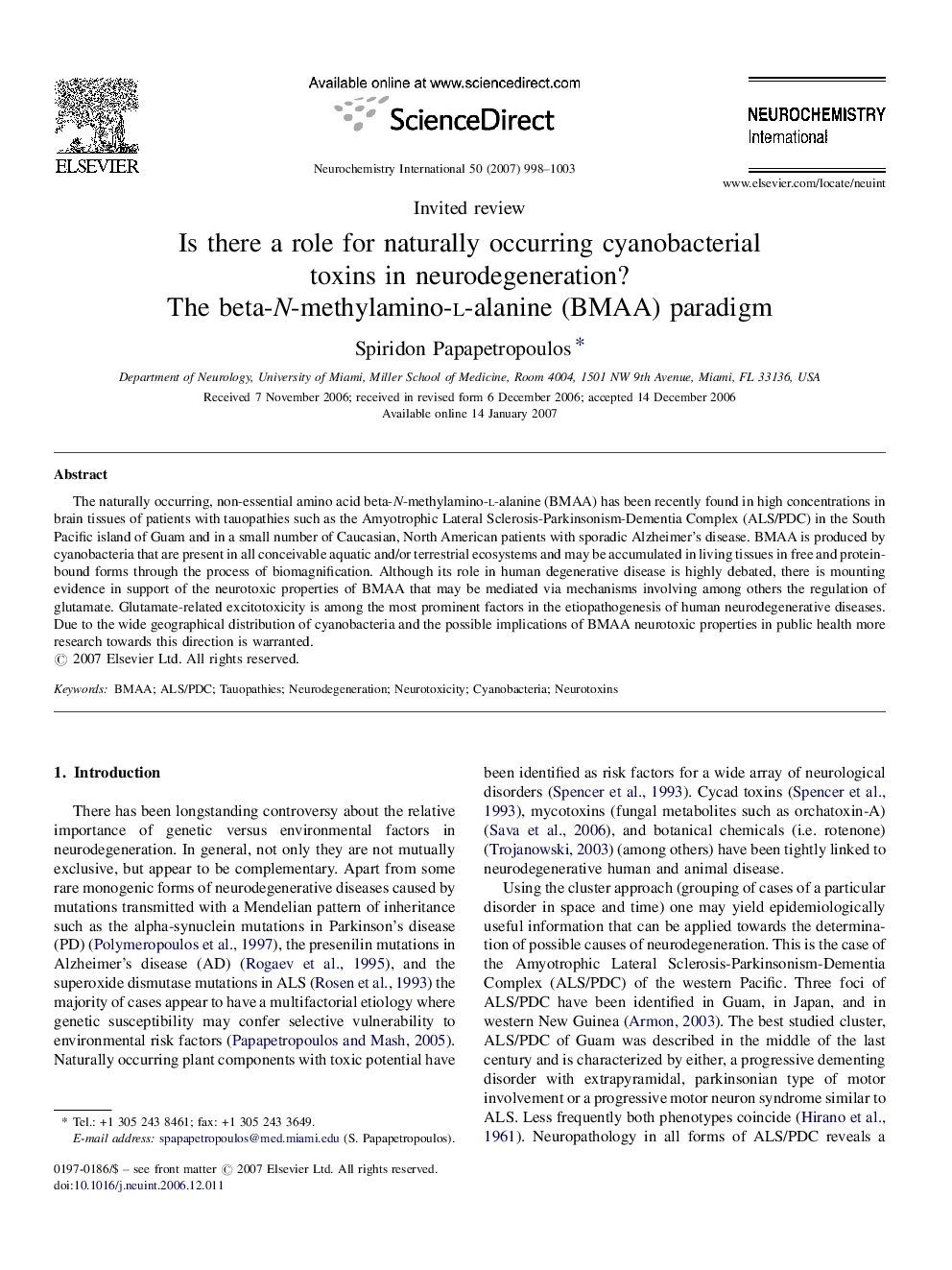| کد مقاله | کد نشریه | سال انتشار | مقاله انگلیسی | نسخه تمام متن |
|---|---|---|---|---|
| 2202028 | 1551322 | 2007 | 6 صفحه PDF | دانلود رایگان |

The naturally occurring, non-essential amino acid beta-N-methylamino-l-alanine (BMAA) has been recently found in high concentrations in brain tissues of patients with tauopathies such as the Amyotrophic Lateral Sclerosis-Parkinsonism-Dementia Complex (ALS/PDC) in the South Pacific island of Guam and in a small number of Caucasian, North American patients with sporadic Alzheimer's disease. BMAA is produced by cyanobacteria that are present in all conceivable aquatic and/or terrestrial ecosystems and may be accumulated in living tissues in free and protein-bound forms through the process of biomagnification. Although its role in human degenerative disease is highly debated, there is mounting evidence in support of the neurotoxic properties of BMAA that may be mediated via mechanisms involving among others the regulation of glutamate. Glutamate-related excitotoxicity is among the most prominent factors in the etiopathogenesis of human neurodegenerative diseases. Due to the wide geographical distribution of cyanobacteria and the possible implications of BMAA neurotoxic properties in public health more research towards this direction is warranted.
Journal: Neurochemistry International - Volume 50, Issues 7–8, June 2007, Pages 998–1003